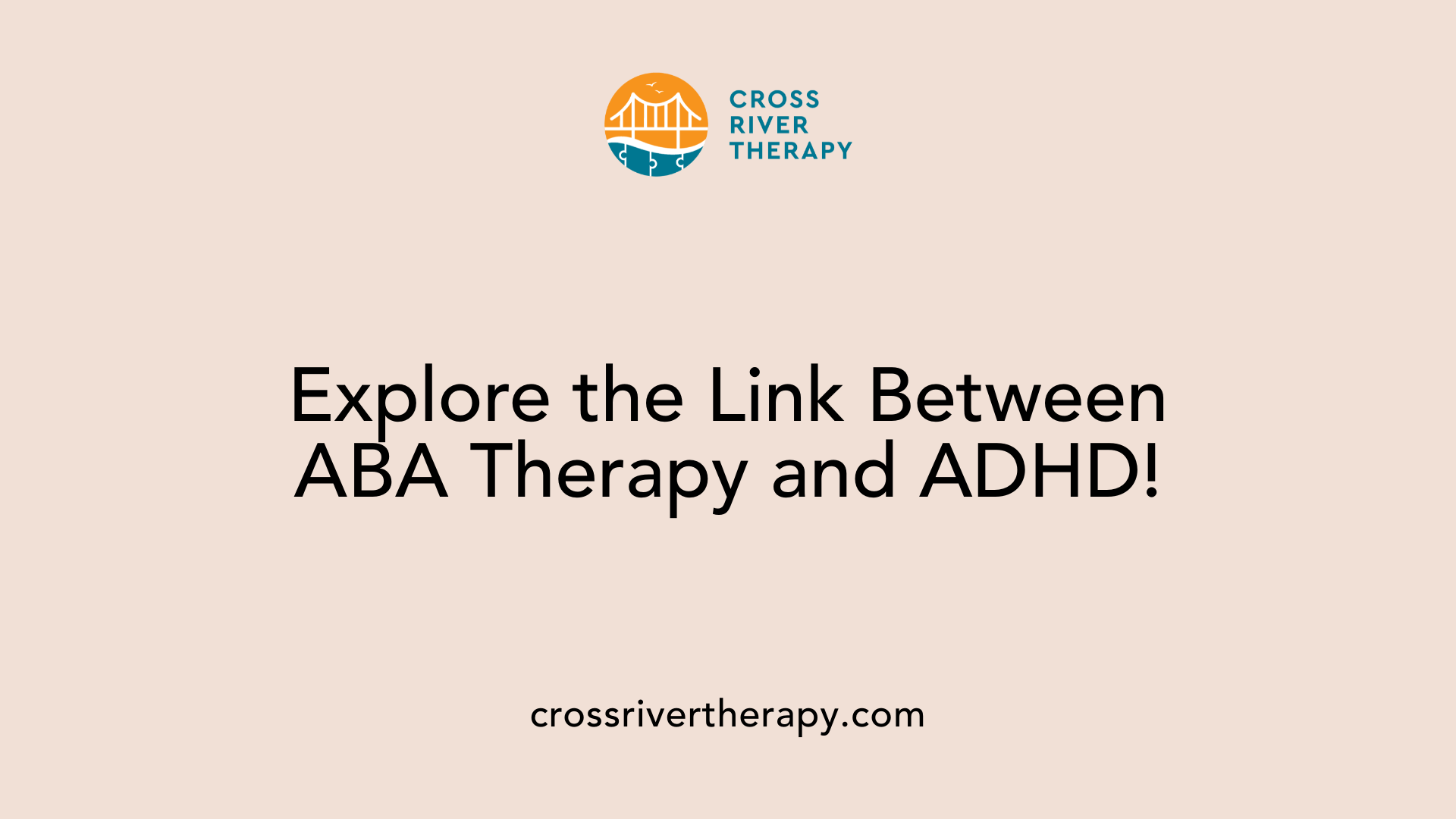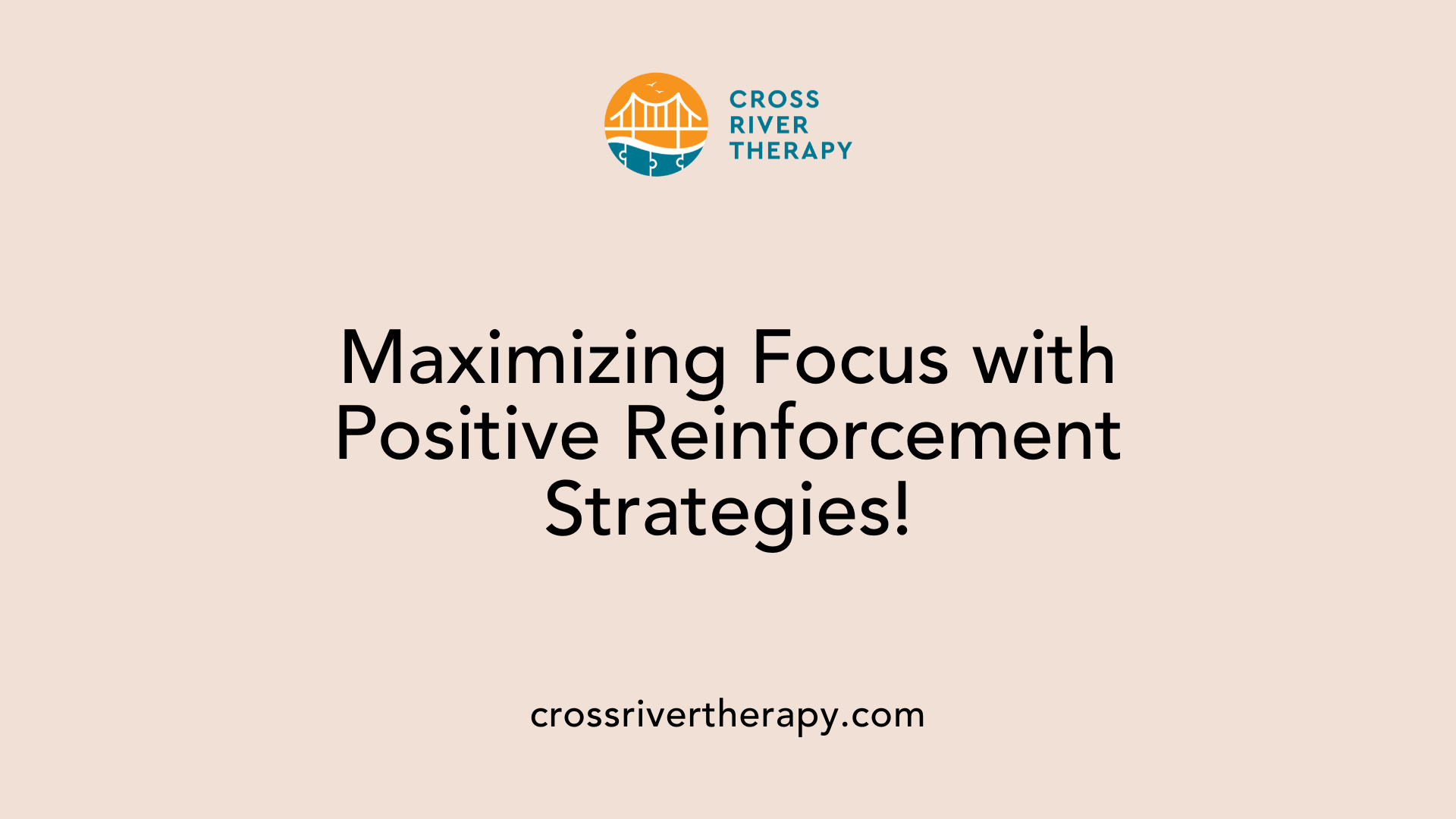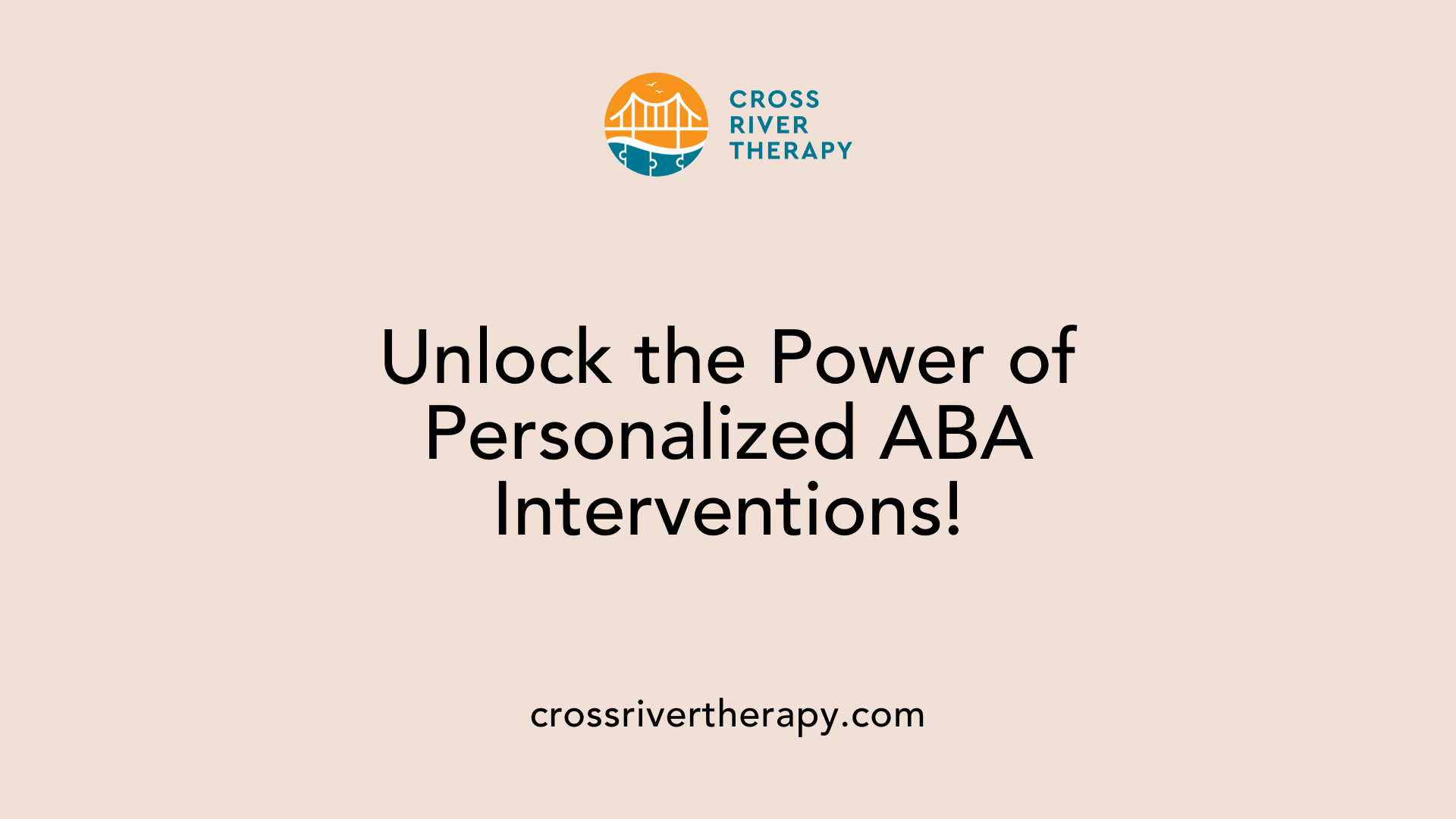Understanding ABA Therapy and Focus Enhancement
Applied Behavior Analysis (ABA) therapy is well-regarded for its effectiveness in enhancing focus and attention, particularly in individuals with autism and ADHD. Through structured, personalized interventions, ABA therapy encourages the development of skills necessary for effective concentration and sustained engagement. In this article, we explore the methods and efficacy of ABA therapy in improving focus, delving into strategies such as positive reinforcement, Discrete Trial Training, and tailored interventions to meet individual needs. We'll examine the underlying mechanisms driving focus improvement and consider the broader benefits and criticisms of ABA therapy.
Core Techniques of ABA Therapy

What are ABA therapy techniques?
ABA therapy employs a variety of evidence-based strategies designed to encourage positive behaviors while minimizing negative ones, particularly for children with autism. Among these techniques, Positive Reinforcement is vital; it involves rewarding desired behaviors to increase their likelihood of recurrence. This creates an engaging environment where children are motivated to sustain their attention and focus on tasks.
Another foundational technique is Discrete Trial Training (DTT). This approach breaks down complex skills into smaller, more manageable steps, allowing for focused practice. As children progress through each step, they build their confidence and ability to maintain attention on tasks, leading to improved learning outcomes.
Additionally, Functional Communication Training (FCT) helps children learn appropriate communication alternatives to problematic behaviors. By teaching effective communication, this technique reduces frustration and improves interactions, thus supporting better concentration during activities.
Models and Modeling Techniques are also essential in ABA therapy. These methods involve demonstrating desired behaviors or skills for the child to observe and imitate. For example, a child can watch peers or therapists engage in a task, which can help them understand how to focus effectively on similar activities.
Here's a quick overview of these ABA techniques:
| Technique |
Description |
Purpose |
| Positive Reinforcement |
Rewards for desired behaviors |
Encouraging repeated focus on tasks |
| Discrete Trial Training |
Breaking skills into smaller parts |
Building confidence and attention through structured tasks |
| Functional Communication Training |
Teaching appropriate communication alternatives |
Reducing frustration and enhancing focus during tasks |
| Modeling Techniques |
Demonstrating desired behaviors for observation |
Helping children replicate focused actions or skills |
By utilizing these structured tools and tailored interventions, ABA therapy effectively addresses focus improvement, enabling children to flourish in both educational and social settings.
Beyond Autism: Versatility of ABA Therapy
Is ABA therapy only for autism?
ABA therapy is not exclusively for autism; it has shown effectiveness for various behavioral issues across different demographics, including children with ADHD, OCD, and PTSD. While it is widely recognized for assisting individuals with autism spectrum disorder (ASD), the foundational principles of ABA can positively impact many other behavioral conditions.
How does ABA therapy apply to ADHD?
ABA therapy's structured approach and emphasis on positive reinforcement can be particularly beneficial for children with ADHD, helping them to improve attention, focus, and task completion. Programs are tailored to meet individual needs, which not only assists with learning difficulties but also enhances social skills and emotional regulation.
- Personalized Interventions: ABA therapists assess the specific challenges faced by children with ADHD, creating individualized plans that incorporate reinforcement strategies for sustained attention and focus.
- Behavior Modification: By employing techniques such as Discrete Trial Training (DTT), ABA breaks tasks into manageable steps that foster engagement and minimize distractions.
What about other behavioral issues?
ABA therapy extends beyond managing autism and ADHD, providing support for children dealing with:
- OCD (Obsessive-Compulsive Disorder): ABA principles help in reducing compulsive behaviors through focused interventions.
- PTSD (Post-Traumatic Stress Disorder): By modifying environmental factors and employing reinforcement techniques, ABA can assist in coping with anxiety and improving behavior.
Insurance coverage for ABA therapy often varies widely. Some policies may only cover treatment if there's an autism diagnosis, while others have expanded to include various behavioral conditions linked to developmental and emotional disorders. It's important for families to thoroughly understand their insurance policies and explore options for coverage on therapeutic services beyond autism, ensuring access to essential treatments.
In conclusion, the principles of ABA therapy offer versatile applications, making impactful changes in the lives of individuals beyond the autism spectrum.
The Intersection of ABA and ADHD Treatment

Is ABA therapy beneficial for ADHD?
ABA therapy presents several advantages for children diagnosed with ADHD. Combining ABA with medication is particularly effective, as numerous studies suggest that this integrated approach leads to optimal results. Techniques used in ABA, such as discrete trial training and differential reinforcement, target specific behaviors, helping improve focus and diminish impulsivity.
For example, through structured interventions, ABA assists children in learning relevant skills while enhancing their attention spans. This structured environment promotes better engagement with tasks, crucial for academic success.
A Board Certified Behavior Analyst (BCBA) is key in this process, as they evaluate the unique needs of each child. The BCBA develops individualized intervention plans that not only build upon the child’s strengths but also address any disruptive behaviors that hinder learning. This tailored approach ensures that each child receives the targeted support they require for improvement.
Furthermore, the National Institute of Mental Health emphasizes the significance of integrating behavioral therapy with stimulant medications to create a well-rounded treatment plan. Although ADHD lacks a definitive cure, employing ABA strategies in conjunction with proper medication can lead to substantial enhancements in both academic performance and social interactions.
How ABA Supports Focus and Attention
Notably, consistent practice and reinforcement of skills taught in ABA therapy at home by families can further solidify these improvements. This collaborative approach helps children with ADHD gain better control over their behavior, ultimately fostering lasting attention-enhancing skills necessary for flourishing in educational settings.
Focus and Growth: Core Aims of ABA
What does ABA therapy focus on?
ABA therapy centers around fostering beneficial behaviors while diminishing harmful ones in individuals, particularly those with autism spectrum disorder and related developmental challenges. It emphasizes enhancing adaptive skills, such as communication and social interaction, to improve the overall quality of life.
This therapy employs evidence-based techniques such as:
- Positive Reinforcement: Encouraging repeatable desired behaviors, thus improving focus and engagement.
- Prompting: Assisting individuals in beginning or completing tasks, fostering independence over time.
- Shaping: Gradually guiding individuals to demonstrate complex behaviors through reinforcement.
How are interventions customized?
Tailored interventions are a cornerstone of ABA, designed specifically around the individual's unique strengths, needs, and family considerations. Each plan starts with a thorough assessment, ensuring that strategies are relevant and effective for the individual.
The interventions may include:
- Discrete Trial Training (DTT): Breaking down complex skills into smaller, manageable steps, enhancing attention and focus.
- Structured Routines: Providing consistency, which minimizes anxiety and distractions, allowing for better concentration on activities.
- Environmental Modifications: Employing antecedent-based interventions to reduce distractions and enhance attention during tasks.
Through these techniques, ABA therapy not only addresses immediate behavioral challenges but also promotes long-term growth in essential life skills.
These personalized strategies have shown significant effectiveness in improving communication, social skills, emotional regulation, and productive engagement in academic environments.
Techniques to Enhance Attention in ABA
How can ABA therapy enhance focus and attention in individuals?
ABA therapy employs a variety of strategies designed to foster sustained attention and improve focus in individuals. One effective approach is through the reinforcement of eye contact. By encouraging children to make eye contact with the therapist during sessions, they learn that this behavior is linked to positive outcomes, such as praise or rewards.
Steps to encourage sustained focus
Here are several practical steps used within ABA therapy to help enhance focus:
- Reinforce Eye Contact: Engaging children during therapy by prompting them to look at the therapist when instructions are given helps create a stronger connection between their behavior and the desired focus on tasks.
- Calling the Learner's Name: Using the child’s name helps to draw their attention directly to the task at hand. Associating this auditory cue with positive reinforcement strengthens their attention to the session.
- Immediate Reinforcers: Providing immediate rewards, like verbal praise or tokens, when the child demonstrates good focus encourages the repetition of these behaviors.
These techniques, when applied consistently, can significantly boost attentional skills and improve overall outcomes for children undergoing ABA therapy. By systematically pairing attention-related behaviors with reinforcement, therapists can create a learning environment where children feel motivated to engage and focus effectively.
Tangible Benefits of ABA Therapy on Focus
What are the benefits of ABA therapy for focus and behavior?
ABA therapy offers numerous benefits for improving focus and behavior. By applying principles of learning and behavior, it helps to enhance essential skills such as language and communication, while also improving social interactions. The method is particularly effective for children with autism or ADHD, as it promotes sustained attention during tasks and activities.
Positive reinforcement is a cornerstone of ABA therapy. By rewarding desired behaviors—like maintaining focus or engaging in appropriate social interactions—children are encouraged to repeat those actions. This systematic approach decreases problematic behaviors, such as aggression or self-injury, as children learn more acceptable ways to express themselves.
A tailored ABA program is crucial to the therapy's effectiveness. Each plan is custom-designed to meet the unique needs of the learner. This ensures that interventions are relevant and engaging, enhancing motivation and participation. Research consistently backs the efficacy of ABA therapy, demonstrating significant improvements not only in attention spans but also in overall behavior management.
The following table summarizes the key benefits of ABA therapy:
| Benefits |
Description |
Impact on Focus |
| Improved Communication Skills |
Enhances language use and social engagement, aiding cognitive functions. |
Greater interaction and understanding. |
| Enhanced Social Skills |
Promotes positive peer relationships, critical for collaborative learning. |
Increases opportunities for focused group activities. |
| Decreased Problematic Behaviors |
Reduces negative behaviors through reinforcement of appropriate actions. |
More attention available for constructive engagement. |
| Personalized Interventions |
Tailored strategies based on individual assessments, ensuring relevancy. |
Increases engagement and attention levels. |
Overall, ABA therapy has proven to be a powerful tool in enhancing focus and behavior, significantly improving the quality of life for individuals on the autism spectrum.
Addressing Criticisms of ABA Therapy
Are there concerns or criticisms about ABA therapy?
There are several concerns and criticisms about ABA therapy, particularly regarding its historical use of punishment techniques, which raised ethical issues. Critics argue that the focus on eliminating certain behaviors can be emotionally harmful and pressuring autistic individuals to conform to neurotypical standards could lead to negative mental health outcomes. This concern emphasizes a potential disregard for the emotional well-being of those undergoing therapy.
Moreover, some believe that ABA may prioritize behavioral compliance over genuine skill-building, which can be counterproductive. Critics highlight that long hours of rigorous therapy could cause exhaustion and resistance among children, potentially diminishing the intended benefits of the therapy.
In response to these criticisms, there is a strong call from autistic advocates for ABA approaches that respect individual differences and promote neurodiversity. The current trend is to utilize positive reinforcement, focusing on improving life skills while emphasizing the importance of consent and emotional safety in therapy settings. Therapists are increasingly encouraged to listen to the voices of those they represent, aiming for methods that are not only effective but also compassionate and respectful.
Positive Reinforcement and Its Role in Focus

Mechanics of Reinforcement
Positive reinforcement is a central technique in ABA therapy, designed to encourage desirable behaviors by providing rewards or incentives. This method might include verbal praise, tokens, or other forms of recognition when a child demonstrates improved attention or focus. By consistently implementing these reinforcements after positive behaviors, ABA therapy helps solidify newly learned skills, creating a pattern where children are motivated to repeat these behaviors over time.
Benefits in Behavior Repetition
The benefits of using positive reinforcement in ABA therapy extend beyond simple acknowledgment. When children receive immediate feedback and rewards for maintaining attention on tasks, it reinforces their understanding of what behaviors are expected. This not only increases the likelihood of repeating those behaviors but also enhances overall engagement in learning activities. As children grow more successful in their focus-related tasks, they develop greater self-management skills, which are essential for both academic success and social interactions. Thus, through repeated positive reinforcement, ABA therapy fosters an enduring improvement in attention spans and task completion rates, paving the way for holistic developmental advancements.
Strategies like Discrete Trial Training (DTT)
Breaking down skills
Discrete Trial Training (DTT) is an essential technique used in ABA therapy that emphasizes breaking complex skills into smaller, manageable parts. This approach allows children to focus on mastering each component effectively. By segmenting tasks, DTT reduces overwhelm and makes it easier for individuals to concentrate on learning one aspect at a time.
Systematic learning approach
DTT employs a structured, systematic learning method. Each discrete trial includes a clear instruction, a prompt if necessary, and a consequence that reinforces the desired behavior. This immediate feedback loop keeps children engaged and motivated, enhancing their focus during learning activities. Moreover, with repeated trials, children are encouraged to practice skills continuously, which in turn fosters long-term attention and retention of information. The predictability in structure also alleviates anxiety, allowing for better concentration and enhancing their overall learning experience.
| Core Elements of DTT |
Description |
Focus Enhancement |
| Task Breakdown |
Skills are divided into smaller components for manageable learning. |
Reduces complexity, increases engagement. |
| Immediate Feedback |
Provides consequences for responses right after trials. |
Encourages correct behavior, enhances focus. |
| Structured Environment |
Predictable setting minimizes distractions. |
Promotes sustained attention during tasks. |
Importance of Tailored Interventions in ABA

Individualized Plans
Tailored interventions form the backbone of effective ABA therapy. Each child presents a unique profile comprising specific strengths, needs, and preferences. Behavior analysts, often Board-Certified Behavior Analysts (BCBAs), carefully assess these characteristics to create individualized programs. This personalized approach not only aligns with the child's goals but also enhances engagement by incorporating elements that interest them.
Such personalized plans may include techniques like positive reinforcement and structured routines aimed at improving attention. For instance, utilizing strategies such as visual aids or breaking tasks into manageable parts helps children better understand and concentrate on their learning objectives.
Long-term Focus Improvement
The benefits of individualized ABA programs extend beyond immediate behavior management. Research shows that children engaged in tailored interventions demonstrate marked improvements in attention span over time. This sustained focus contributes to better performance in both academic and social settings.
By fostering a consistent structure and employing regular feedback, therapists can track each child's progress and adjust strategies seamlessly. Moreover, parental involvement in reinforcing these strategies at home is vital, as it ensures continuity and maximizes the development of attentive behaviors. In the end, the combination of tailored interventions and active participation paves the way for long-lasting enhancements in focus and academic success.
Collaboration in ABA Therapy

Parent Involvement
Collaboration between families and ABA therapists is a critical component in enhancing the effectiveness of therapy. Parents play a vital role in reinforcing the skills their children learn during therapy sessions. By engaging actively in the process, they help to establish consistency in the application of strategies taught in therapy. This can significantly impact how well children implement learned skills in daily life.
Home Application of Strategies
Integrating ABA strategies at home allows for sustained focus on the skills being developed during therapy sessions. For instance, parents may use positive reinforcement techniques, such as offering praise or rewards, whenever their child demonstrates improved focus or completes tasks effectively. Involving siblings in activities designed to support attention and focus can also create a supportive environment at home.
The Importance of Consistency
Families trained in ABA methods can create structured routines, minimizing distractions and reinforcing the skills their child has acquired. This continuity between the therapy environment and home life promotes generalized learning, whereby children can apply their skills across different settings. As noted in studies, the synergy between therapy and home practice leads to overall improvements in attention and behavior, enhancing educational and social outcomes.
Concluding Thoughts on ABA's Impact on Focus
ABA therapy plays a pivotal role in enhancing focus and attention among individuals with autism and ADHD. By utilizing evidence-based strategies tailored to individual needs, it fosters not only improved concentration but also advancements in communication and social skills. While criticisms exist, the evolution of ABA practices towards a more ethical and positive framework has been significant. This integration of personalized interventions and reinforcement techniques underscores ABA therapy's potential in improving life quality for many children and their families.
References